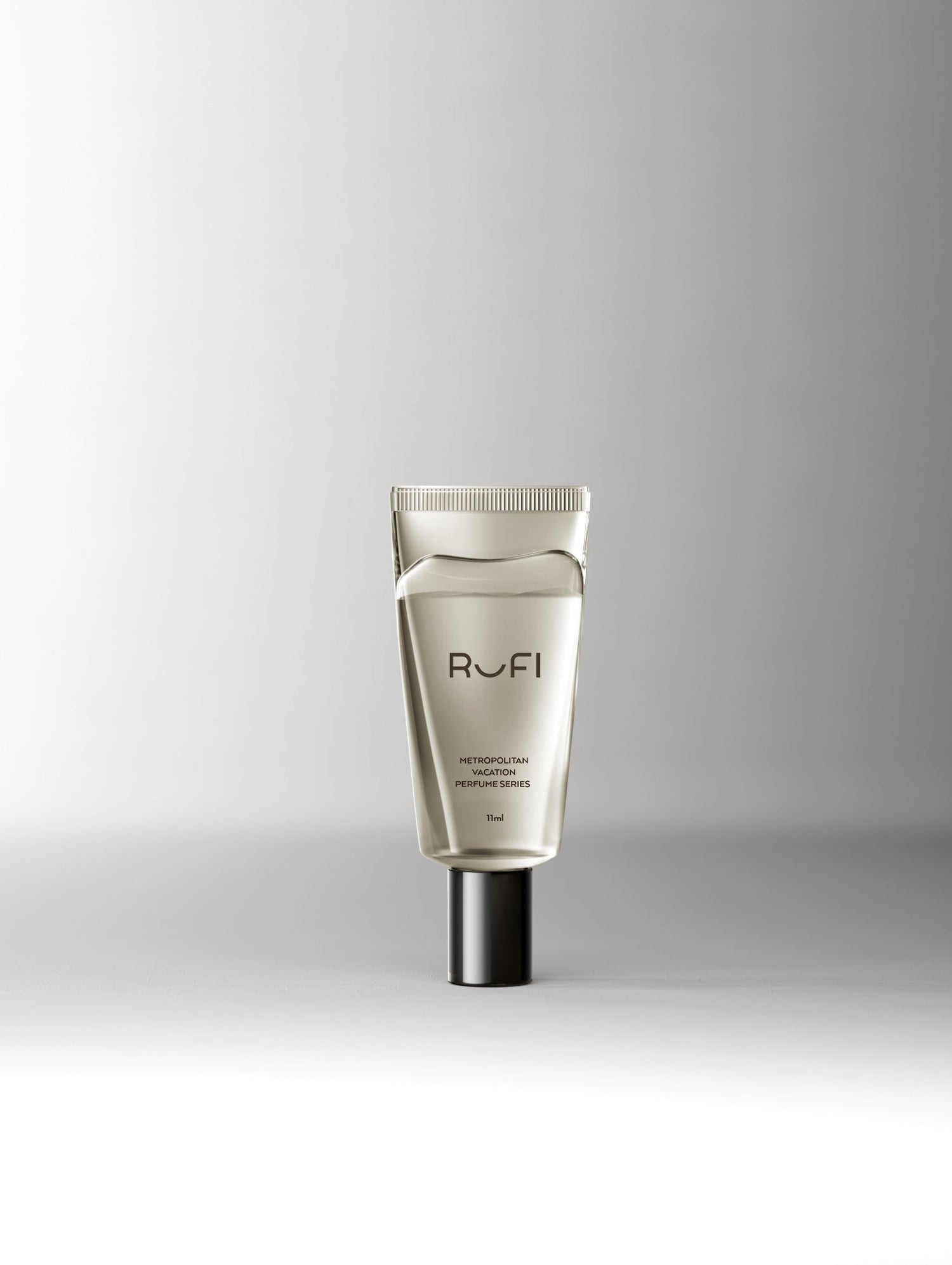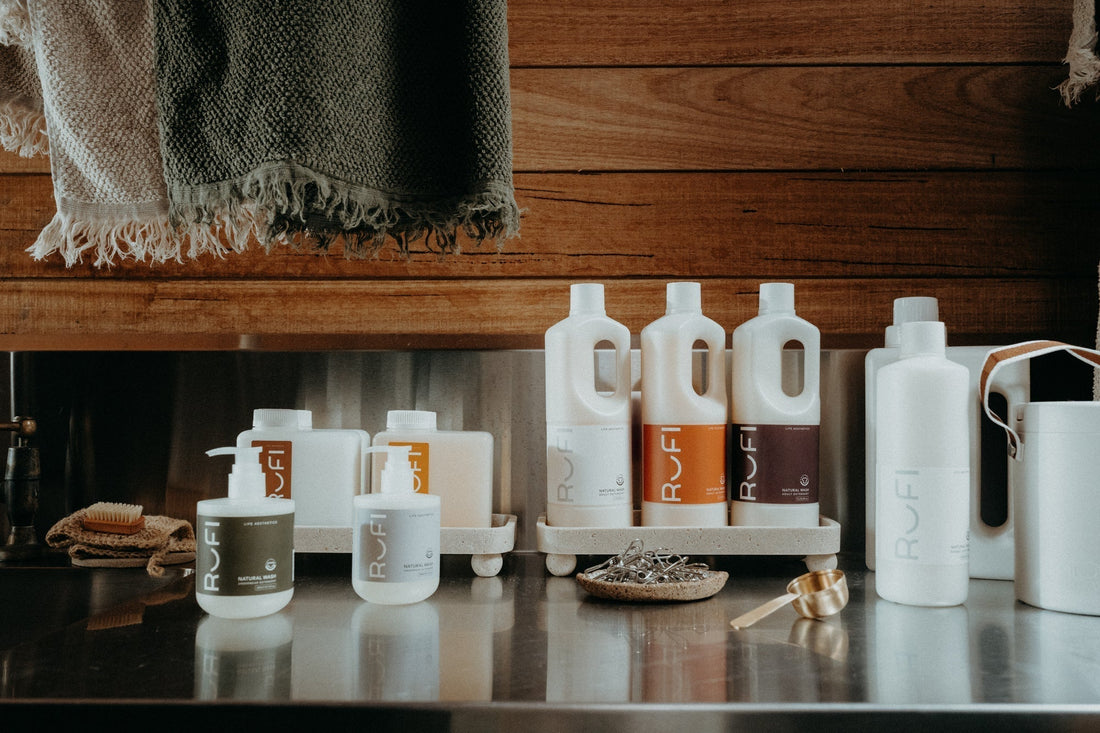Doing laundry is part of our personal care essentials, as it is part of our daily routine and helps keep our clothes fresh and clean. When you have a full load of dirty laundry, you feel like you should double the amount of laundry detergent to get it clean.
But getting your laundry clean shouldn’t be rocket science. Yet many Aussies still get one key step wrong: detergent dosage. Too much, and you’re left with soap scum and smelly clothes. Too little, and you're wearing yesterday’s grime all over again.
The Impact of Using Too Much or Too Little Laundry Detergent
Using the right amount of detergent isn’t just about getting your clothes clean, but it affects many things from your washing machine, your utility bills, and how long your fabrics last. Too much detergent can leave behind residue, cause odors, and strain your washer. Too little, on the other hand, might not lift dirt, oils, or bacteria, leaving your laundry less clean than it looks.

Like how you bake your weight the correct amount of flour, sugar, and butter, that can be also done with washing your laundry. Measuring detergent dosage depends on load size, water hardness, and your machine type. It is done carefully to help you get better results while saving money and reducing wear on your clothes and appliances.
Let’s look at why detergent dosage matters more than you think. This is the most common laundry mistake, but also the easiest to fix that will lead to fresher clothes.
Why Detergent Dosage Matters
Detergent isn’t just soap. It’s a ‘Surface Active Agent’ or surfactant, a chemical powerhouse that breaks down grease, lifts stains, and suspends dirt in water so it doesn’t resettle on your clothes. But its effectiveness depends heavily on three factors:
- Water hardness: Hard water requires more detergent to clean effectively.
- Load size: The more clothes, the more dirt, and the more detergent needed.
- Washer type: High-efficiency (HE) machines need less detergent, while traditional top-loaders use more water and need a slightly higher dose.
Basically, laundry detergent is generally divided into three types: anionic, cationic, and non-ionic surfactants. Anionic surfactants help remove dirt and stains, cationic surfactants work as fabric softeners, and non-ionic surfactants reduce water hardness, which helps anionic surfactants clean more effectively.
Yet many people still guess by eye like it’s some ingredient they use with food. They skip label instructions and sometimes just dump and pour detergent, hoping for the best. Maybe you’re one of these people who does this too. Let us tell you—stop it now, or you’ll end up dealing with more problems.
What Happens When You Use Too Much Detergent
Today’s washing machines use less energy and water than the ones your mother and grandmother used. But one common laundry mistake people make is using too much detergent. You might think more soap means cleaner clothes, but that’s not how it works. Overdosing your wash can backfire in several ways:
- Residue on clothes: With too much detergent, your washing machine cannot rinse away the extra soap. The leftover detergent can cause soap scum, leading to skin irritation, especially for kids or people with sensitive skin.
- Funky smells: You don’t want mold building up in your washing machine. Mold is unsightly, makes your clothing smell unpleasant, and can cause health problems. Excess suds create a breeding ground for mold and bacteria inside your washer.
- Water and energy waste: Too much soap creates many bubbles, which don’t rinse out as easily as water does. More suds mean more rinse cycles, which can be bad for your bills and the planet.
- Damage to HE machines: HE washers are sensitive to sudsy build-up, which can trigger error codes and even void warranties. In the worst case, excess bubbles cause overheating, leading to SUDS or SD errors. This stresses the washer, keeps it locked, and forces it to keep draining until you unplug it.
- Shortened machine lifespan: Overloading your laundry with detergent can cause technical issues just as overloading it with weight does. Excess suds can overflow, and residue build-up clogs internal parts, increasing wear and tear. Over time, detergent buildup inside the machine can lead to costly repairs or even shorten your washer’s lifespan.
Signs You're Overusing Detergent
Since modern washing machines are more energy and water-efficient now, it’s a win for sustainability. But it stops being a win when you use too much detergent, as it negatively impacts the cleanliness of both your clothes and your washing machine. With too much soap, the water cannot remove all the residue.

A sign that you’re overusing detergent is when suds are still visible after the rinse cycle, you’ll notice it right away. Another sign is when you open your washing machine and it smells musty or sour, which is a result from excess detergent buildup.
At the same time, when you hang your laundry on a clothespin or outside your house, you may feel stiffness in the clothes. This means there wasn’t enough water in the rinse cycle. The dried detergent coats the fibers, leaving your clothes feeling stiff and waxy, and it can cause itchiness.
What Happens When You Use Too Little Detergent
On the flip side, using less detergent than needed might seem eco-friendly, but your clothes may not be as clean as you think. Laundry detergent typically includes a cleanser that does the actual work of cleaning, along with a water-softening agent that helps the cleaner work most effectively.
You can easily notice when you use too little detergent, dirt and oil remain, and your clothes look dull, greasy, or feel sticky. Underuse leaves behind grime, especially on collars, cuffs, and underarms. Moreover, odours and bacteria linger, which is especially risky for baby clothes, sweaty activewear, or hospital garments.
Detergent isn’t just for looks—it’s for sanitation. If you use too little, hygiene suffers.
How to Measure the Right Amount
First things first, consider your washing machine’s age. Older standard top-loading washers can use over 30 gallons of water per load, while newer high-efficiency machines can use as little as 7 gallons. So, how do you find your detergent sweet spot? Follow these expert tips:
1. Check the detergent label:
Always start with the manufacturer’s instructions. They test for the right balance of cleaning power and suds control. Use the recommended amount for your machine type (HE or standard).
2. Match the dose to your washer
- HE front- or top-loading washers: Use 2 teaspoons (10 ml) for a small load, 1–2 tablespoons (15–30 ml) for a medium load, and up to 3 tablespoons (45 ml) for a heavily soiled or extra-large load.
- Standard top-loading washers: Use 1/4 cup (60 ml) for a regular load, and up to 1/3 cup (80 ml) for heavily soiled loads.
3. Adjust for load size and soil level
-
Small loads:
HE: 2 teaspoons (10 ml) | Standard: 2 tablespoons (30 ml)
Small loads need less detergent because there’s less fabric and dirt to clean. Using more than this can leave residue on clothes.
-
Medium loads:
HE: 1 tablespoon (15 ml) | Standard: 1/4 cup (60 ml)
This is the standard amount for a regular-sized wash with everyday dirt or sweat. Enough to clean without wasting detergent.
-
Large or heavily soiled loads
HE: 2–3 tablespoons (30–45 ml) | Standard: 1/3 cup (80 ml)
Bigger loads or very dirty clothes (like muddy sports gear) need more detergent so the cleaner can break down all the dirt and stains effectively.
4. Factor in water hardness
- Hard water: Add about 25% more detergent than the above amounts, or use a water softener.
- Soft water: Reduce detergent by 25–50% to prevent residue.
5. Measure and don’t eyeball
Use a proper measuring spoon or the marked lines on your detergent cap. Eyeballing often doubles the intended dose, can lead to using too much detergent, leading to residue and odor issues.
6. Use the right detergent for your washer
Only use HE detergent in HE machines because regular detergent produces excess suds that can damage the washer. Meanwhile, for standard washers, you can use regular or HE detergent, but stick to the measurements above.
Why Using the Right Amount Saves You Money
Correct dosing isn’t just about cleanliness, it’s also about cost efficiency and sustainability. When you use the right amount of detergent, you avoid unnecessary rewashes. Fewer rewashes mean less water is used, which saves both your time and the energy needed to heat or pump that water. Not over-pouring detergent prevents product waste, so the bottle lasts longer and you buy less often. Cleaner clothes also mean the fabric fibers stay stronger for longer, so you don’t have to replace garments as often.
Your washing machine benefits too through using the correct amount of detergent to prevent soap buildup, which reduces wear and tear and lowers the risk of breakdowns or expensive repairs. And last but definitely not least, all these small changes add up to lower utility bills from reduced water and electricity use. Over a year, proper dosing could save a household hundreds of dollars while helping the environment.
Get the Best Results Every Wash
Getting consistently fresh, clean laundry comes down to three things: using the right detergent, measuring the correct dose, and choosing the right cycle for your fabrics. The detergent you choose matters from high-quality formulas that clean more effectively, protect fabrics, and prevent residue buildup.
With Rufi Laundry Detergent, you get a balanced formula that removes dirt and stains without damaging clothes or irritating skin. During your busy days, Rufi Laundry Capsules make measuring foolproof with each capsule containing the exact amount of detergent for a standard load, so there’s no guessing and no waste.
For delicate items like underwear, which need extra care and hygiene, Rufi Underwear Detergent is specially designed to remove bacteria and odor while being gentle on sensitive
When you combine the right detergent, like Rufi’s Laundry Detergent, Capsules, or Underwear Detergent—with the correct dose and cycle, you protect your clothes, extend your washer’s life, and save money in the long run, all while keeping your laundry fresh and hygienic every time.

FAQ
Q: How much detergent should I use per load?
A: For HE machines, around 2 tablespoons is usually enough. For standard machines, 1/4 cup or as per the product label.
Q: What happens if I use too much detergent?
A: Residue, skin irritation, health problems, bad smells, and potential damage to your washer.
Q: Can using too little detergent ruin clothes?
A: Over time, yes. Dirt and oils build up, and hygiene suffers.
Q: Does HE detergent mean you can use less?
A: Yes! It’s more concentrated and made for low-water machines.
Q: What’s the best way to measure detergent properly?
A: Use a dedicated scoop or measuring cup, don’t eyeball it.
Q: How do I know if I need more detergent for hard water?
A: If clothes come out dingy or stiff, try increasing the dose slightly or use a water softener.


